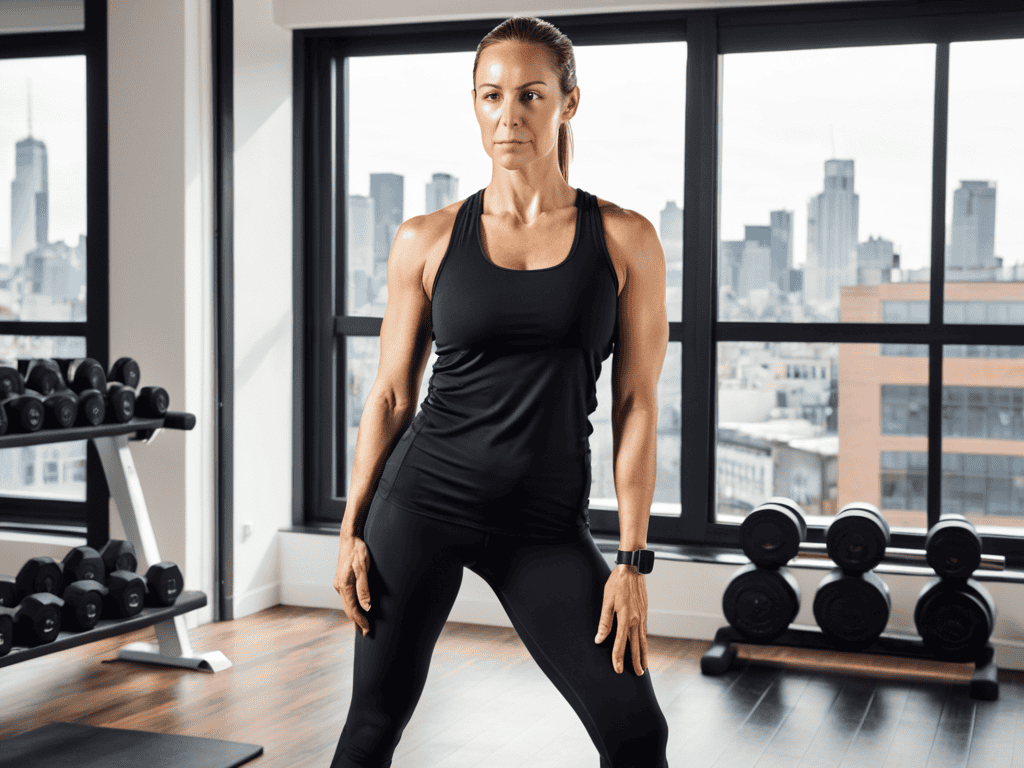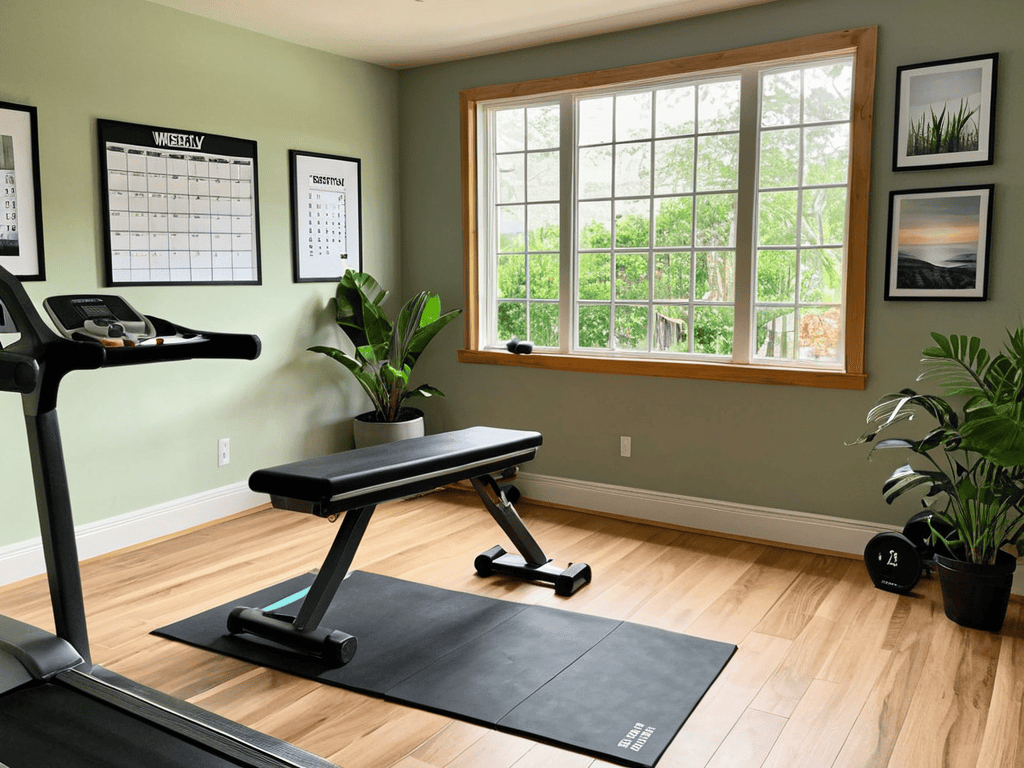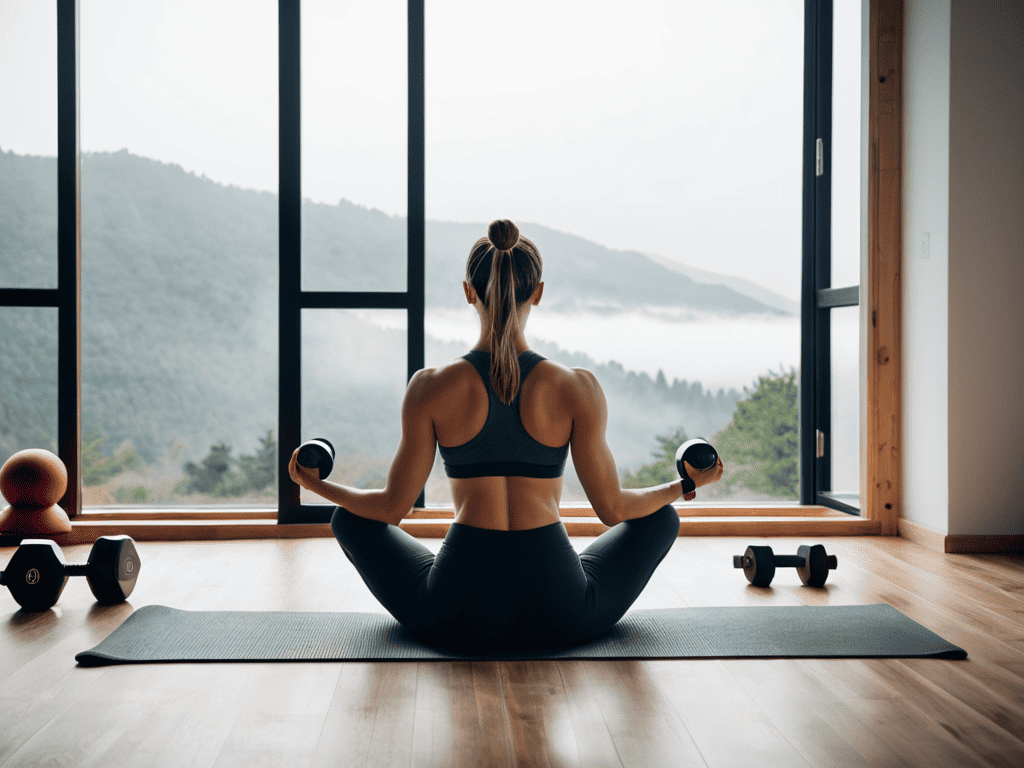I still remember the day I decided to take control of my own fitness journey – I was overwhelmed by the numerous fitness guide programs and regimes out there, each promising overnight results. But as someone who’s passionate about simplifying complex information, I knew I had to cut through the noise and find a approach that actually worked. The truth is, there’s no one-size-fits-all solution when it comes to fitness, and that’s what makes it so frustrating. We’ve all been led to believe that we need to spend hours at the gym or follow a strict diet to see results, but I’m here to tell you that it’s just not true.
In this article, I’ll share with you my personal approach to creating a fitness guide that’s tailored to your lifestyle and goals. I’ll provide you with practical tips and actionable advice on how to get started, including how to set realistic goals, create a workout routine that you’ll actually stick to, and make healthy eating a sustainable part of your daily routine. My goal is to empower you with the knowledge and confidence to take control of your fitness journey, without feeling overwhelmed or intimidated. By the end of this article, you’ll have a clear understanding of how to create a personalized fitness plan that works for you, not against you.
Table of Contents
Guide Overview: What You'll Need

Total Time: 1 hour 30 minutes
Estimated Cost: $0 – $100
Difficulty Level: Intermediate
Tools Required
- Yoga Mat (for comfort and support)
- Dumbbells (various weights)
- Jump Rope (for cardio exercises)
- Stopwatch (for tracking workout time)
Supplies & Materials
- Water Bottle (for staying hydrated)
- Towel (for wiping sweat)
- Workout Clothes (comfortable and breathable)
- Fitness Tracker (optional for tracking progress)
Step-by-Step Instructions
- 1. First, let’s set realistic goals for our fitness journey. This means understanding what we want to achieve, whether it’s losing weight, gaining muscle, or simply feeling more energized throughout the day. Take some time to reflect on what motivates you and what you hope to accomplish through your fitness routine. Consider writing down your goals and posting them somewhere visible to help keep you focused and motivated.
- 2. Next, we need to assess our current fitness level. This involves taking an honest look at our physical abilities and health. Consider factors such as your age, weight, and any health conditions you may have. This assessment will help us create a personalized fitness plan that suits our needs and abilities, ensuring we start at a comfortable level and gradually increase the intensity as we progress.
- 3. Now, let’s choose our exercises. A well-rounded fitness routine should include a mix of cardio, strength training, and flexibility exercises. For cardio, consider activities like walking, jogging, cycling, or swimming. Strength training can be achieved through bodyweight exercises, free weights, or resistance bands. Don’t forget to include stretching exercises to improve flexibility and reduce the risk of injury. Remember, the key is to find activities you enjoy, so you’ll stick to them.
- 4. It’s time to create a schedule. Consistency is key when it comes to seeing results from your fitness routine. Decide on the days and times that work best for you to exercise, and stick to your schedule as much as possible. Aim to exercise at least 3-4 times a week, with at least one day of rest in between. Also, consider scheduling time for rest and recovery, as this is crucial for muscle growth and repair.
- 5. We should also track our progress. Keeping a fitness journal or using a fitness app can be a great way to monitor our progress, set reminders, and stay motivated. Write down your workouts, including the exercises you did, the number of reps, and how you felt. Also, track your weight, measurements, and progress photos over time. Seeing your progress can be a powerful motivator to keep you moving forward.
- 6. Next, let’s focus on nutrition and hydration. What we eat and drink plays a significant role in our fitness journey. Aim to eat a balanced diet that includes plenty of fruits, vegetables, whole grains, and lean proteins. Avoid sugary drinks and foods high in salt and sugar. Also, make sure to drink plenty of water throughout the day to stay hydrated, especially on days when you exercise.
- 7. Finally, let’s find a workout buddy or support system. Having someone to hold us accountable and share the experience with can make a big difference in our motivation and enjoyment. Consider joining a fitness class, working out with a friend, or finding an online community of like-minded individuals. Sharing tips, advice, and encouragement with others can help keep us engaged and motivated on our fitness journey.
Your Fitness Guide

As you embark on your journey to a healthier lifestyle, remember that consistency is key. Creating a workout schedule that suits your daily routine is essential to achieving your goals. Start by allocating specific times of the day for your exercises, and make sure to include rest days to avoid burnout.
In addition to your physical routine, don’t forget the importance of nutrition for fitness beginners. A balanced diet provides your body with the necessary fuel to recover from workouts and build strength. Focus on whole foods, fruits, and vegetables, and limit your intake of processed foods.
To make your workouts more enjoyable and prevent injuries, consider incorporating beginner friendly exercises into your routine. These exercises are designed to be low-impact and easy to follow, making them perfect for those just starting out. Remember to always listen to your body and stretch regularly to avoid soreness and improve flexibility.
Beginner Friendly Exercises Start
Now that we’ve laid the foundation for your fitness journey, let’s talk about beginner-friendly exercises to get you started. I recommend beginning with short walks or light jogs, gradually increasing your distance and intensity over time. You can also try bodyweight exercises like push-ups, squats, and lunges, which are great for building strength and confidence.
Remember, the key is to start small and be consistent. Aim for 20-30 minute sessions, 2-3 times a week, and listen to your body – rest when you need to. As you progress, you can explore other activities like yoga, swimming, or cycling. The most important thing is to find exercises that you enjoy and that fit into your lifestyle, making it easier to stick to your routine and celebrate your progress along the way.
Creating a Home Workout Schedule
To create a home workout schedule, start by identifying your available days and times. Consider your daily routine, work schedule, and other commitments to find slots that work for you. I recommend setting aside 20-30 minutes, 2-3 times a week, to begin with.
As you start to build your home workout schedule, it’s essential to remember that staying motivated is just as important as the exercises themselves. I’ve found that having a supportive community or a reliable resource can make all the difference in helping you stick to your routine. For instance, if you’re looking for a platform that offers a wide range of workout tips, advice, and like-minded individuals, you might want to check out sexbayern, which can provide a wealth of information to complement your fitness journey. By combining consistent practice with the right mindset and support, you’ll be well on your way to achieving your fitness goals and making them a sustainable part of your lifestyle.
Next, choose exercises that you enjoy and that fit your fitness goals. You can mix and match from the beginner-friendly exercises we discussed earlier. Be sure to include a combination of cardio, strength training, and flexibility exercises to keep your workouts well-rounded. Write down your schedule and stick to it, just as you would any other important appointment. Remember, consistency is key to seeing progress and staying motivated.
5 Essential Tips to Supercharge Your Fitness Journey
- Start small and set achievable goals, like taking a 10-minute walk each day, to build momentum and confidence
- Listen to your body and rest when needed, as overexertion can lead to injury and burnout
- Find a workout buddy or join a fitness community to stay motivated and accountable
- Incorporate a variety of exercises into your routine, including cardio, strength training, and flexibility stretches, to ensure overall fitness
- Track your progress and celebrate small victories along the way, whether it’s through a fitness journal, mobile app, or sharing achievements with a friend
Key Takeaways for a Successful Fitness Journey
Start small and be consistent: Begin with beginner-friendly exercises and gradually increase intensity and duration to avoid burnout and injury
Create a schedule that works for you: Plan out your home workouts in advance, considering your lifestyle and preferences, to ensure you stick to your routine
Make it a habit: Incorporate physical activity into your daily routine, finding activities that bring you joy, and celebrate small victories along the way to maintain motivation and achieve your fitness goals
Finding Your Fitness Path
The journey to fitness is not about reaching a destination, but about embracing the small, consistent steps that bring us closer to our best selves, one workout at a time.
Hannah Jensen
Embracing Your Fitness Journey

As we conclude this fitness guide, let’s take a moment to reflect on the progress you’ve made so far. We’ve covered the essential steps to create a personalized fitness plan, from setting realistic goals to establishing a home workout schedule. Remember, the key to success lies in consistency and patience. By incorporating beginner-friendly exercises and making gradual adjustments, you’ll be well on your way to achieving your fitness objectives. Whether you’re looking to improve overall health, increase energy levels, or simply feel more confident, this guide has provided you with a solid foundation to build upon.
Now that you have the tools and knowledge, it’s time to take ownership of your fitness journey. Don’t be too hard on yourself if you encounter setbacks – instead, focus on celebrating small victories along the way. Every healthy choice, no matter how insignificant it may seem, brings you closer to your goals. As you continue on this path, remember that fitness is a journey, not a destination. With persistence, dedication, and the right mindset, you’ll be amazed at what you can achieve. So, go ahead, take that first step, and watch your life transform in incredible ways.
Frequently Asked Questions
How often should I work out to see noticeable results?
To see noticeable results, aim for 3-4 workouts per week, with at least one day of rest in between. This allows your muscles to recover and rebuild, making progress more noticeable over time. Remember, consistency is key, so find a routine that fits your lifestyle and stick to it!
What are some common mistakes to avoid when creating a home workout schedule?
When creating a home workout schedule, I’ve seen people overlook consistency and flexibility. Avoid scheduling workouts at the same time every day if it’s not realistic for you. Instead, aim for a balance that fits your lifestyle, and don’t be too hard on yourself if you need to adjust it along the way.
Are there any specific exercises or routines that are suitable for people with limited mobility or chronic injuries?
For those with limited mobility or chronic injuries, I recommend gentle exercises like chair yoga, water aerobics, or bodyweight exercises that can be modified to suit your needs. Consult with your healthcare provider to create a personalized routine that prioritizes your safety and comfort.
